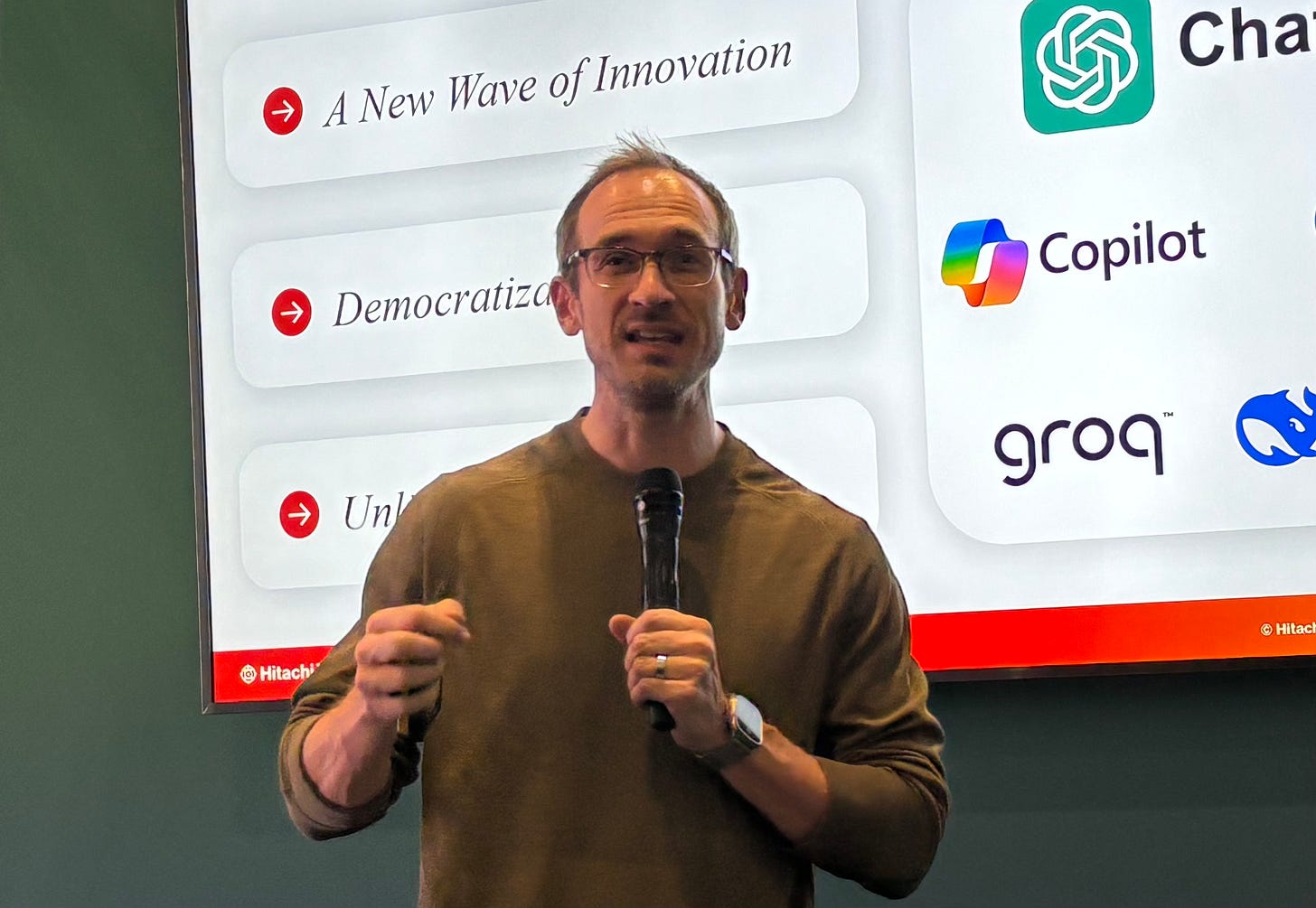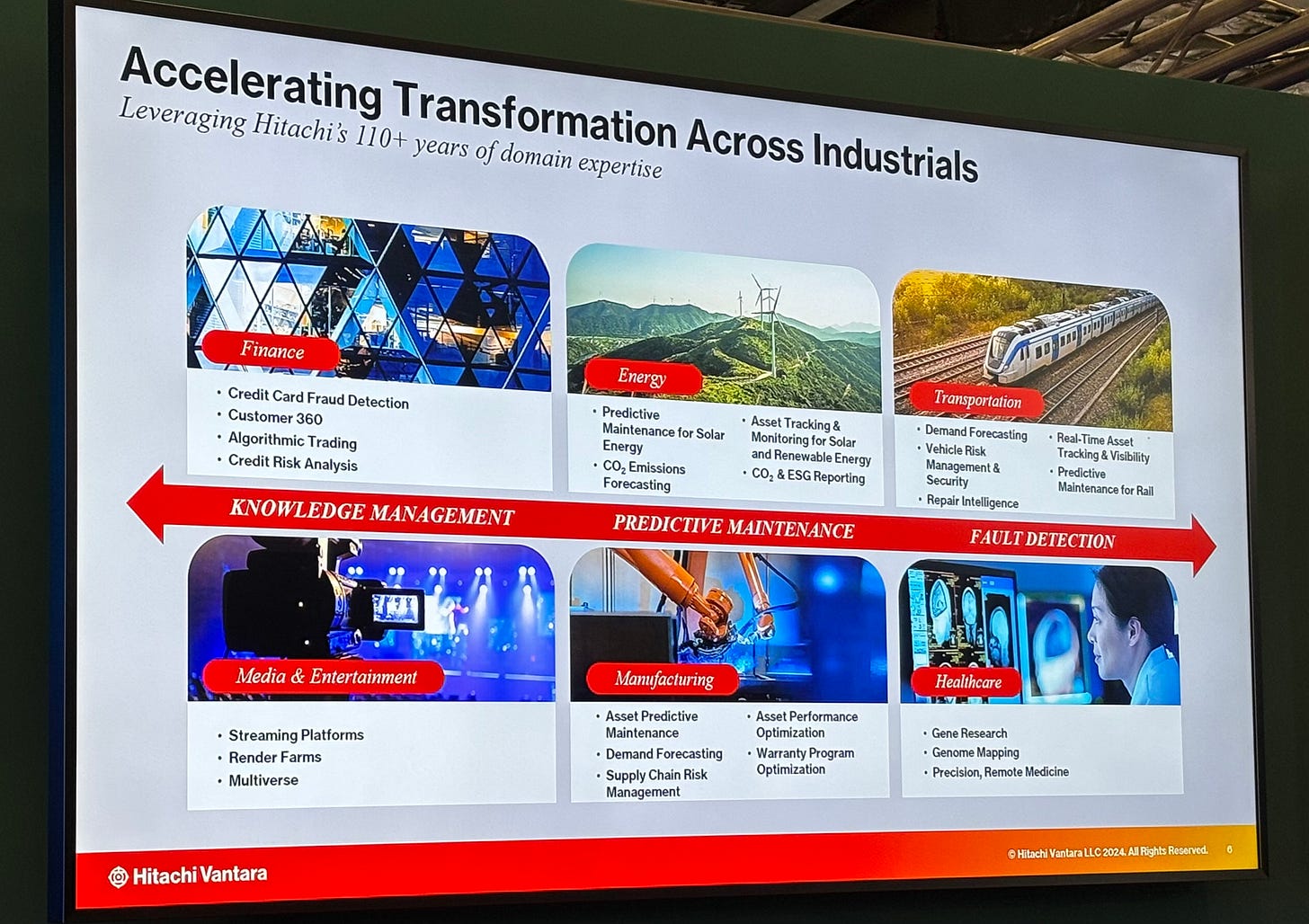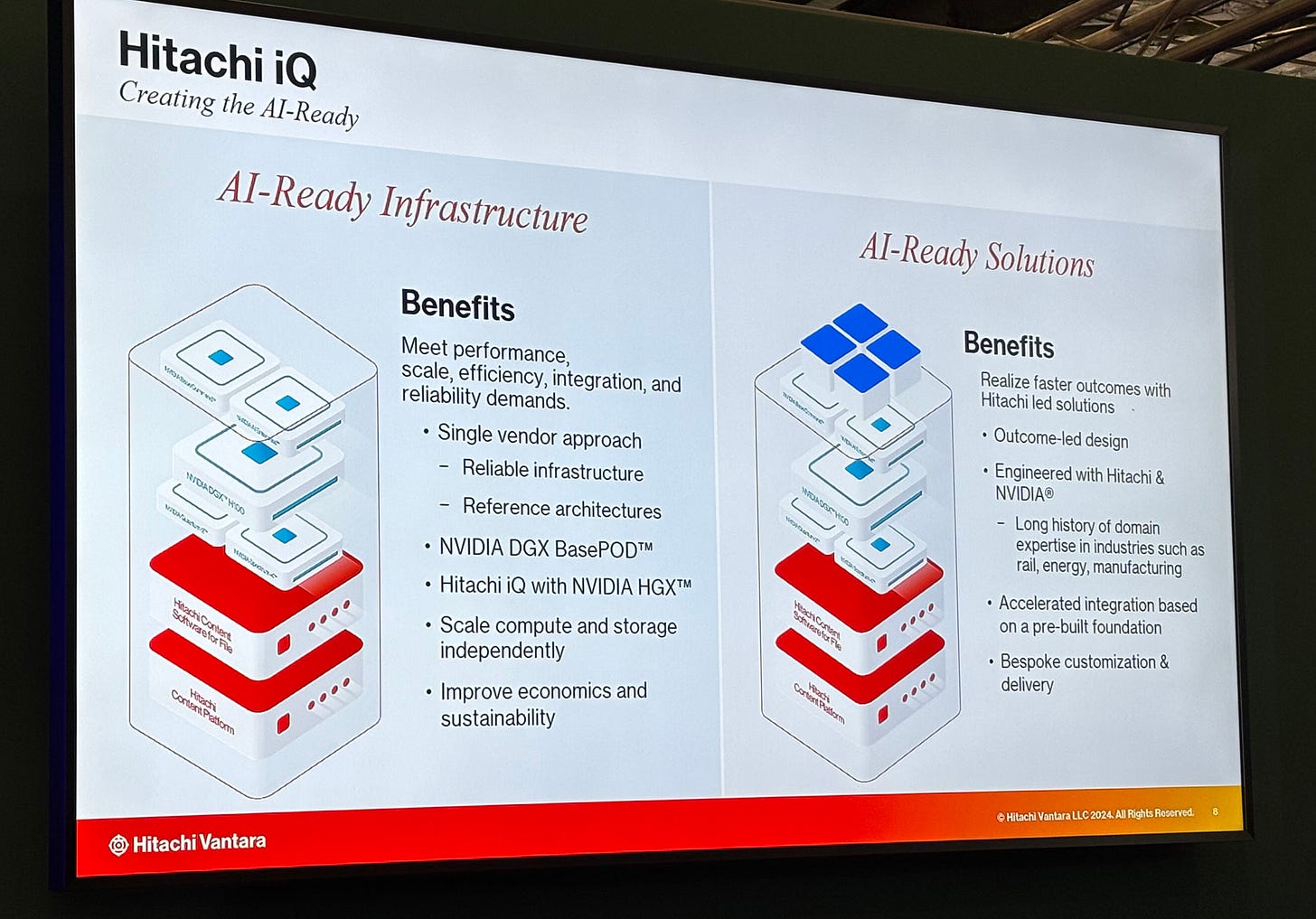Hitachi Vantara Guides Businesses from Selecting LLMs to AI Hardware Investments Within Budget
AI adoption demands strategy, cost-efficiency, and the right technology—businesses must navigate wisely

In the rapidly evolving world of artificial intelligence (AI), companies face significant challenges in adopting and integrating these technologies into their operations. From skyrocketing costs to a lack of expertise and unclear use cases, businesses are struggling to unlock AI’s full potential.
At Tech Show London, Jason Hardy, Chief Technology Officer for Artificial Intelligence at Hitachi Vantara, addressed these concerns and showcased how the company is helping organizations navigate the AI landscape effectively.
Hardy emphasized that while AI and generative AI have created a wave of innovation, many organizations are rushing to embrace these technologies without clear strategies.
“The number one question I get is, 'Where do we start? What are your use cases?' Then it steps into, 'Okay, I want to start here. This sounds great, but I have no expertise on this.' So if I’m going to unlock the potential, how do I actually do that?” he explained.
Another pressing challenge is cost. The financial burden can be overwhelming, from acquiring AI talent to investing in infrastructure.
Hardy pointed out that companies often rush to purchase GPUs and other AI-related hardware without a defined outcome in mind. Instead of taking this reactive approach, Hitachi Vantara provides structured guidance and roadmaps to help businesses make strategic, cost-effective AI investments.
Hitachi Vantara’s Pragmatic Approach
At the heart of Hitachi Vantara’s strategy is a commitment to providing structured, hybrid AI solutions. Hardy highlighted the company’s unique position due to its experience across multiple industries, from power grids and manufacturing to financial services and transportation.
“Our customer base isn’t just traditional IT shops,” he stated. “We build nuclear power stations. We build global rail networks. We have to have a very pragmatic approach that lets us step into embracing AI in a trustworthy way.”
Hitachi Vantara’s AI portfolio, branded as Hitachi iQ, is designed to simplify AI adoption. The company partners with Nvidia to embed AI technologies into real-world applications, such as trains and manufacturing systems.
“It’s about creating an out-of-box experience that generates real value and defines ROI,” Hardy said. “We are going to be redefining what ROI actually means.”
The Power of Choice in AI: Why Hitachi Vantara Supports Multiple LLMs
A key aspect of Hitachi Vantara’s AI strategy is its commitment to flexibility. Unlike some providers, which force customers into a specific AI ecosystem, Hitachi Vantara allows businesses to choose which large language models (LLMs) best suit their needs.
“That’s as much of a legal decision as a technical one,” Hardy explained. “We don’t say ‘this one or that one.’ Instead, we evaluate what they are trying to do, what market they operate in, and what is acceptable from data sources.”
With over 52,000 different LLMs available, Hardy emphasized the importance of careful selection.
“Llama is the easy one, but go to Hugging Face—there are 52,000 different LLMs out there,” he said. “So from our perspective, we walk through the use case and help the customer decide on that through our LLM Ops process.”
Tech Show London: Showcasing AI’s Real-World Impact
Tech Show London, held on March 13, 2025, was pivotal for showcasing AI advancements.
Hardy’s presentation, "Hitachi Vantara: Simplifying AI Solutions for Your Organisation," highlighted how the company drives AI transformation across various industries.
One example of Hitachi Vantara’s work is its collaboration with Penske, the largest fleet management company in the U.S. Hitachi Vantara helped develop Penske’s predictive maintenance system, integrating over 280 AI models to track vehicle performance and forecast failures with precise accuracy.
“We can predict down to the mile when a truck will go offline,” Hardy explained. This technology also supports Penske’s fleet electrification efforts, contributing to their carbon-neutral goals.
Another major achievement is Hitachi Vantara’s role in the Sphere project in Las Vegas, the world’s brightest and most immersive digital display.
“Every video on the exterior and interior of that thing came from Hitachi Vantara,” Hardy noted.
The company uses generative AI to help Sphere create dynamic, on-the-fly content, and it plans to expand the technology to new locations worldwide.
AI for Sustainability and Industrial Innovation
Hitachi Vantara is also leveraging AI for environmental conservation. The company collaborates with Rainforest Connection, deploying acoustic sensors in the Amazon to detect illegal poaching activities.
“We listen to birds, monkeys, chainsaws—anything that shouldn’t exist. And with 97% accuracy, we predict poaching seven days in advance,” Hardy shared.
In agriculture, Hitachi Vantara has even revolutionized banana farming in Australia by using AI-driven IoT technology. By monitoring nitrogen levels, water use, and peak ripeness, the company has helped farmers reduce costs and environmental impact while ensuring better crop yields.
The Future of AI: From Rail Networks to Renewable Energy
Transportation is another domain in which Hitachi Vantara is making strides.
Hardy described how Hitachi’s trains, equipped with 40,000 sensors, previously took 60 days to report track conditions. Now, through a collaboration with Nvidia, AI-powered high-performance computing systems provide real-time rail monitoring in just 60 seconds.
“We integrate this data into safety and maintenance systems, ensuring a safer, more efficient rail network,” Hardy said.
When asked whether Hitachi Vantara applies AI solutions to renewable energy systems, Hardy confirmed that predictive maintenance extends to solar farms.
“Whether I’m doing it for a train, a manufacturing plant, or a solar farm, it’s about understanding the data and applying it to the intended outcome,” he emphasized.
Hitachi Vantara, a wholly owned subsidiary of Hitachi Ltd., was founded in 1989 by acquiring National Advanced Systems.
With a history rooted in data management, AI, and hybrid cloud solutions, Hitachi Vantara has become a data backbone for mission-critical industries. The company works closely with customers to architect scalable, secure, and intelligent data infrastructure, empowering businesses to innovate while maintaining agility and stability.
A Call to Action for AI Adoption
Hardy concluded his presentation with a call to action for businesses to explore AI in a structured, meaningful way. Hitachi Vantara’s AI Discovery Service helps customers assess their environments and build roadmaps within three weeks, ensuring a well-defined ROI before significant investments are made.
“This leads to pilots, and pilots lead to production, and production leads to money,” Hardy stated.
He stressed that with AI continuing to evolve rapidly, Hitachi Vantara is just getting started. “The solutions and outcomes we design will keep evolving. Have a conversation with us. Help us help you ideate and implement AI for your organization.”
Companies need the right partners to navigate the transformation as AI reshapes industries. With its deep industry expertise, customizable AI solutions, and pragmatic approach, Hitachi Vantara is a leader in helping businesses unlock the true power of artificial intelligence.




